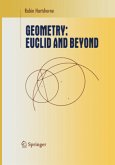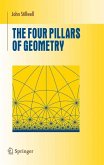GEOMETRY: Plane and Fancy offers students a fascinating tour through parts of geometry they are unlikely to see in the rest of their studies while, at the same time, anchoring their excursions to the well known parallel postulate of Euclid. The author shows how alternatives to Euclid's fifth postulate lead to interesting and different patterns and symmetries. In the process of examining geometric objects, the author incorporates the algebra of complex (and hypercomplex) numbers, some graph theory, and some topology. Nevertheless, the book has only mild prerequisites. Readers are assumed to have had a course in Euclidean geometry (including some analytic geometry and some algebra) at the high school level. While many concepts introduced are advanced, the mathematical techniques are not. Singer's lively exposition and off-beat approach will greatly appeal both to students and mathematicians. Interesting problems are nicely scattered throughout the text. The contents of the book canbe covered in a one-semester course, perhaps as a sequel to a Euclidean geometry course.








